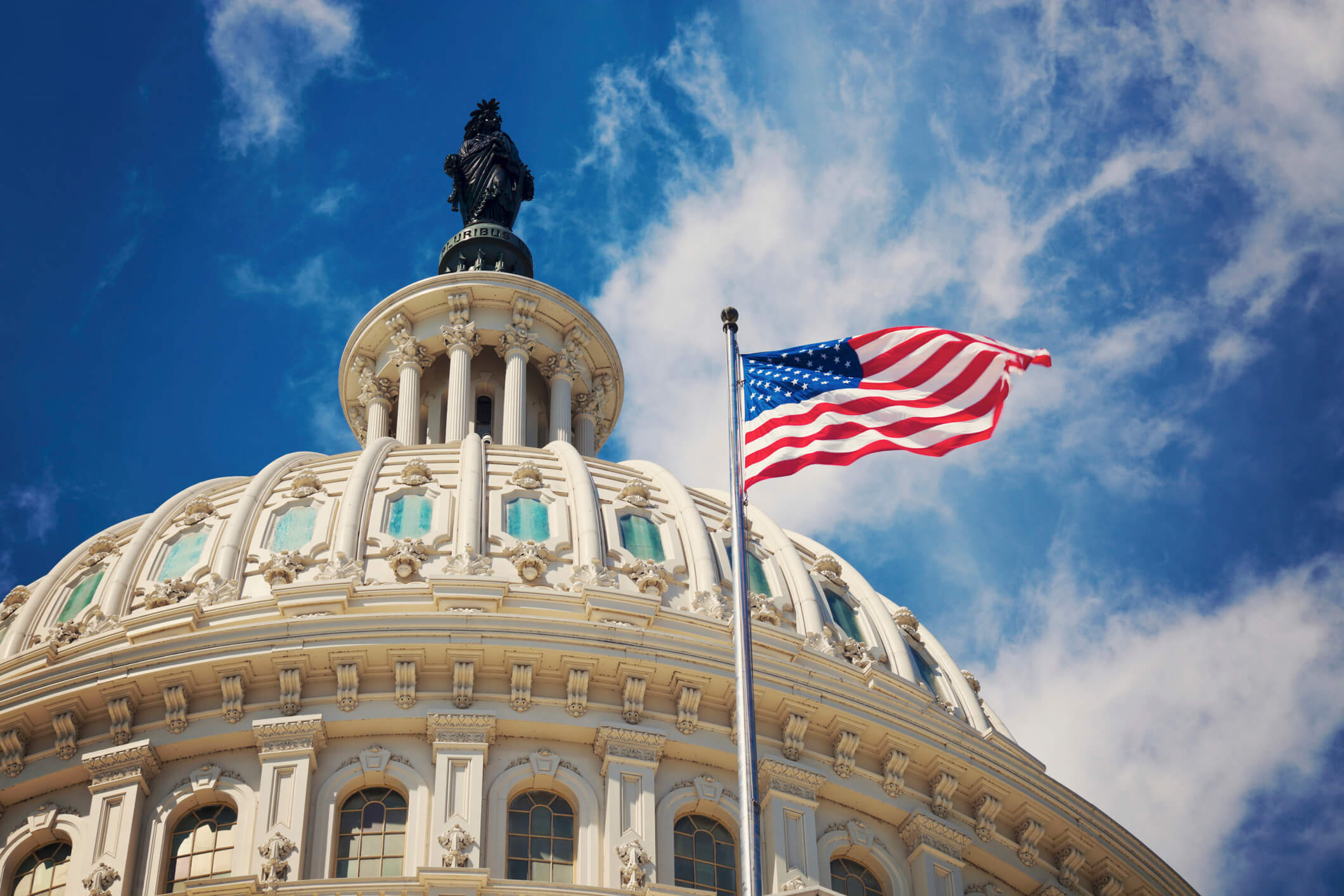NLRB: President Trump Fires GC Abruzzo, Member Wilcox. With the arrival of the new Trump administration, many labor policy watchers have been wondering when President Donald Trump would take action regarding the National Labor Relations Board (NLRB). Well, this week, President Trump not only fired NLRB General Counsel Jennifer Abruzzo (which was widely anticipated), but he also dismissed Board Member Gwynne Wilcox. The moves leave the Board in a state of legal limbo, as the remaining Board members—Chair Marvin Kaplan, a Republican, and Member David Prouty, a Democrat—do not constitute an operating forum (though routine operations of the Board—such as processing election petitions—will continue). Moreover, filling Abruzzo’s place is Acting General Counsel Jessica Rutter, who is unlikely to make moves to reverse the Board’s controversial decisions that we’ve chronicled at the Buzz. Jennifer G. Betts, Rodolfo R. Agraz, and Zachary V. Zagger have the details.
Administration Offers Federal Employees “Deferred Resignation” Option. The Office of Personnel Management (OPM) this week presented most federal employees with an employment buyout option: (1) stay in their current positions without “full assurance regarding the certainty” of the viability of the position or agency; or (2) resign by February 6, 2025, and “retain all pay and benefits regardless of your daily workload … until September 30, 2025.” Frequently Asked Questions that accompany the directive clarify that employees are not expected to work during the deferred resignation period. The directive comports with the administration’s goals of returning federal employees to in-person work and creating a “[m]ore streamlined and flexible workforce.” While there are many layers to this issue—including potential legal challenges and the roles that union contracts may play—significant federal employee departures could result in administrative disruptions and backlogs at agencies such as the NLRB, U.S. Equal Employment Opportunity Commission (EEOC), U.S. Department of Labor (DOL), and the U.S. Department of Homeland Security (DHS), and may trickle down to employers in the form of delayed agency responses and processing times.
EEOC Commissioners and GC Removed. According to media reports, President Trump has removed EEOC Commissioners Charlotte A. Burrows and Jocelyn Samuels, and also discharged EEOC General Counsel Karla Gilbride. While Gilbride’s removal was expected—President Biden removed Sharon Fast Gustafson in March 2021—the removal of sitting commissioners is unprecedented. Title VII of the Civil Rights Act of 1964 creates staggered five-year terms for EEOC commissioners, but it does not establish a process for removal. Samuels’s and Burrows’s terms were set to expire in mid-2026 and 2028, respectively, which would have assured Democratic control of the Commission for one and a half years into President Trump’s administration. Now only Kalpana Kotagal, a Democrat, and Acting Chair Andrea Lucas, a Republican, remain on the Commission, leaving it without a functioning quorum (day-to-day enforcement and litigation activities will continue even in the absence of a quorum). President Trump now has the opportunity to establish a Republican majority on the Commission, pending potential legal challenges to the removal of Samuels and Burrows. Nonnie L. Shivers, Tiffany Stacy, and Zachary V. Zagger have the details.
EEOC Acting Chair Sets Forth Priorities. On January 28, 2025, EEOC Acting Chair Andrea Lucas issued a press release, titled, “Removing Gender Ideology and Restoring the EEOC’s Role of Protecting Women in the Workplace,” in which she outlined the steps the Commission would take to implement President Trump’s Executive Order 14168, “Defending Women From Gender Ideology Extremism and Restoring Biological Truth to the Federal Government.” According to the release, Acting Chair Lucas has, among other actions:
- “Announced that one of her priorities—for compliance, investigations, and litigation—is to defend the biological and binary reality of sex and related rights, including women’s rights to single-sex spaces at work.”
- “Ended the use of the ‘X’ gender marker during the intake process for filing a charge of discrimination.”
- “Commenced review of the content of EEOC’s ‘Know Your Rights’ poster, which all covered employers are required by law to post in their workplaces.”
- “Removed materials promoting gender ideology on the Commission’s internal and external websites and documents, including webpages, statements, social media platforms, forms, trainings, and others.”
Importantly, Acting Chair Lucas acknowledges that she lacks the authority to amend or withdraw the Commission’s guidance on harassment in the workplace, despite instructions to do so in the executive order, and even though she believes the guidance is “fundamentally flawed.” An affirmative majority vote by the Commission would be necessary for such an action, as it would to amend the Commission’s regulations implementing the Pregnant Workers Fairness Act. Nonnie L. Shivers and Zachary V. Zagger have the details.
BLS: Union Membership Decline Continues. This week the Bureau of Labor Statistics (BLS) released its 2024 data regarding union membership rates. Overall, the percentage of workers who were members of labor unions dipped ever so slightly to 9.9 percent (it was 10 percent in 2023). Similarly, the private-sector unionization rate decreased from 6 percent in 2023 to 5.9 percent in 2024. Thus, even with President Biden’s “whole of government” approach to promoting unionization and myriad decisions from the NLRB benefiting labor unions, the overwhelming majority of workers prefer union-free workplaces.
Fred Korematsu and a “Morally Repugnant” Executive Order. Civil rights icon Fred Korematsu was born in Oakland, California, on January 30, 1919. In 1942, at the age of 23, Korematsu was arrested and convicted for refusing to be forcibly relocated to a military internment camp following President Franklin D. Roosevelt’s issuance of Executive Order 9066, which authorized the internment of Japanese Americans during World War II. Korematsu appealed his conviction, arguing that the executive order violated the Fifth Amendment of the U.S. Constitution. In 1944, the Supreme Court of the United States upheld his conviction, writing:
Korematsu was not excluded from the Military Area because of hostility to him or his race. He was excluded because we are at war with the Japanese Empire, because the properly constituted military authorities feared an invasion of our West Coast and felt constrained to take proper security measures, because they decided that the military urgency of the situation demanded that all citizens of Japanese ancestry be segregated from the West Coast temporarily.
In the decades following Korematsu’s 1944 release from the Central Utah War Relocation Center in Topaz, Utah, the U.S. government took steps to right the wrongs of the executive order. For example, in 1976, President Gerald Ford rescinded the order, and in 1983, Korematsu’s conviction was vacated. President Bill Clinton awarded Korematsu the Presidential Medal of Freedom in 1998. But the Supreme Court’s odious decision in Korematsu v. United States wasn’t formally overruled until 2018 in Trump v. Hawaii, where Chief Justice John Roberts—referring to the order as “morally repugnant”—wrote:
The dissent’s reference to Korematsu, however, affords this Court the opportunity to make express what is already obvious: Korematsu was gravely wrong the day it was decided, has been overruled in the court of history, and—to be clear—“has no place in law under the Constitution.”





